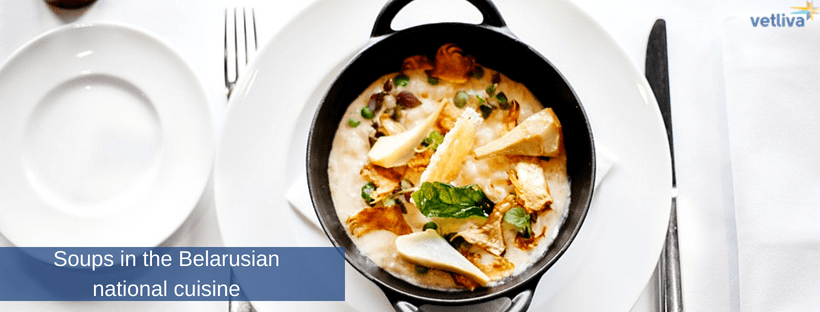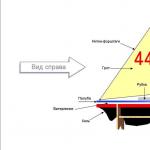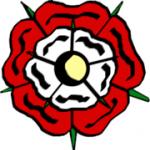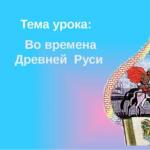National dishes show the soul of residents. We will tell you about the Belarusian cuisine, its features and secrets. Also we have the list of top 10 dishes that everyone should try if he wants to join the national сolouring.
History and traditions of Belarusian national cuisine
Culinary traditions of our country are rooted in pagan times. Finally they were formed during the existence of the the Grand Duchy of Lithuania. The main part of Belarusian recipes was included in the book "Lithuanian cook" in 1848. Lter the book was reissued in Belarusian language in 2013.
Adam Mickiewich is the famous Belarusian-Polish poet and in his immortal poem called «Pan Tadeusz»
he sang «Bigos»
is national dish of stewed sauerkraut and pieces of meat. By the way, it is considered as a peasant dish because the nobility and magnates ate more exotic food. On the table of the famous Radziwill dynasty were oranges, cinnamon, ginger, cloves. They brought these products fr om travels. As hunting was one of the favorite employment of the nobility, traditionally they ate different kind of quarry. They stewed, boiled and even baked it whole.

If we are talking about potatoes, we want to dispel the myth. The basis of the foundations of the Belarusian national cuisine came to our country only in 1670, but a century later it became widespread. Therefore, the common food of a simple Belarusian person consisted of such products as:
- beet greens that were kept in the cellar, also it was soured, pickled. Botvinia is a cold soup, that nowadays called “okroshka” and “сold borshch”,
- fat that was salted with the skin and used instead of meat,
- fish,
- mushrooms,
- berries.
As a rule, meat was only on holidays on the table of peasants. At Christmas they prepared porridge fr om grains. It is a festive dish of Belarusian people.
Potatoes became the main ingredient for everyday dishes. European recipes and peculiarities of national traditions of neighboring countries began to penetrate into Belarusian cuisine. There were meals from wheat flour, different salads and other. Belarusians started to eat more meat, but the statistics says that their neighbors Polish use it almost twice as large.
Top 10 Belarusian national dishes according to Belarus 24

Now it is time to tell you about 10 national dishes of Belarus:
1. Draniki. It is the most popular dish of Belarus! The recipe was borrowed from German cuisine and described for the first time in the book "Well-trained cook" in 1830. So the basis of all bases entered the ration of Belarusians less than two centuries ago.
An interesting fact is that this popular dish was called potato pancakes and the name comes from the old Russian verb "to tear". Now it has the meaning of "to grind, to grate". Usually draniki were served with other dishes. We have already told how to cook a duck with draniki in one of the issues of the program "Belarusian cuisine".
2. Vereshchaka.
As Yakub Kolas wrote in his poems"New land" and "Working people were sweating, they wanted just vereshchaka". The court cook of the king of Polish-Lithuanian named Vereshchak known in the history of Belarusian cuisine as the creator of an interesting dish. He came up with the idea to stew pieces of sausage in gravy mixed with fat. Over time, Vereshchaka appeared in the ration of rural people. They were preparing it on major holidays.

3. Botvinnik (beet root soup). Traditionally this soup made from beet greens. Nowadays we are preparing a soup from cold beetroot, but then it was very expensive for a simple peasant.
4. Kopytkiis another delicious potato dish in our list.This Belarusian plate got its original name for its shape. People prepared grated potato mass, then formed a layer of it, after it was cut into pieces as small hooves. Kopytki serves with machanka.
5. Machankai s a sausewhere other dishes should be dipped, such as pancakes or in our case is kopytki. You can watch our program and learn how to prepare it.
6. Pyachysta . As part of this dish it might be baked lamb, hole chicken or quarry. Nowadays it is rare, but earlier it was widespread. Frequently Pyachysta appeared on the princely table and it was prepared in a very interesting way. Dressed chicken or other poultry were soaked and then buried for a few days into the sand. After it was stuffed with herring mince. At first glance it is incompatible products, but in fact meat was very delicate and tasty.
7. Nalisniki
called Belarusian pancakes, but it is wrong. Nalisniki is not a separate dish. They are served with a variety of different fillings, such as kulaga (hasty pudding)or curd cheese.

8. Beer soup . Our top would be incomplete without another traditional Belarusian soup, wh ere the main ingredient is beer. The history of this dish dates back to the 16-18 centuries, when beer was very popular drink in Belarus.
9. Krambambula is kind of strong alcoholic drink with honey that consist of alcohol, honey and spices. All noble banquets were with Krambambula on the table.
10. Sbiten is traditional Belarusian non-alcoholic drink with herbs.
An interesting fact is that it might be served so cold as hot,no matter what the time of a year. Cold Sbiten is perfect for refreshing in the summertime and hot drink is very good in cold weather.
Our program "Belarusian cuisine" is the best recipes of the national cuisine.
Culinary and historical show "Belarusian cuisine" is a program wh ere every new unlock cooking secrets of old dishes in modern conditions. You will learn how to cook traditional draniki, bake quarry in a right way and prepare delicious home kvass. Watch our program and discover the culinary soul of Belarus!
Belarusian national cuisine has existed for many centuries. It’s influenced by , geographical location, and climate. Agriculture causes using a lot of vegetables in cooking national dishes. Mostly, it was local food that was used in Belarusian cookery but there is a little influence fr om migrants fr om the bordering territories.
History of Belarusian cuisine
Recipes of other nations (Baltic, Jewish, German) appeared in Belarusian cuisine since existing of the Grand Duchy of Lithuania. For many centuries Belarusians didn’t consume a lot of meat but they ate lard as the Ukrainians did. It was pickled with its skin. As a substitute for meat there were mushrooms however at that time they were not pickled but dried.

Diary and sweet were almost not consumed in Belarusian cuisine. But there were sweet drinks such as kissel or shortening for a dessert.
Later on Belarusians used more meat in their ration. Usually meat dishes were cooked on holidays. The most popular kinds were pork, beef, poultry and game. Since that time there have been such dishes as machanka, verashchaka, smajanka, home sausages and pickled lard.

River fish was also widely used in national recipes. The most popular species were pike, sturgeon, blackhead, carp, perch, and zander. Soup and dumplings were prepared fr om fish.
Country cuisine was nutritious, simple and fresh. A lot of dishes were served to table being hot. Dishes for princes and gentry were more various and exotic. There were stuffed sanders and delicacy on magnates’ tables.
In Soviet Union times Belarusian cuisine was influenced by other nations. Ukrainian and Caucasian food was served in public places.
In the 20 th century a lot of Belarusian dishes were fr om wheat flour but not from rye as it was earlier. There were also a lot of salads.

Modern Belarusian cuisine
Nowadays it’s hard to use the same products as our ancestors did. Some vegetables and beans disappeared from our table. But many dishes have existed so far: pancakes, dumplings, pickles, kvass and beet soups, home sausages, lard, meat dishes.
Potato is an ingredient that exists in many Belarusian dishes. An average Belarusian eats a half of a kilo of potato every day. There are a lot of potato recipes such as draniki, baked puddings, babka, fried and stewed potato.
In Belarus meat is eaten twice as less than in Poland. By the way the most popular meat is not very useful but tasty pork.

The most popular meat dishes:
- bigos – stewed cabbage with meat;
- kolduny – potato fritters with meat;
- machanka – a sauce from different sorts of meat, served with pancakes;
- smajanka – meat pie.

As for alcohol drinks there are nastoykas from vodka, cranberry, honey such as zubrovka, crambambulya. Kvass and birch sap is also popular.
Deserts
Honey has been popular throughout all the history. Belarussians like pancakes with honey, honey cereals and pies. Soloduha (a sort of pastry), kissel, baked apples were cooked with honey.
Praniki is a sweet flour dish that was originally called “perniki”. People believe that it took its name from pagan times when people worshipped many gods and one of them was Perun, god of the Sun. At that time people brought something to Gods and especially figures of animals from sweet and tasty pastry. Later on the name changed as well as its taste because now they are made from wheat flour but not from rye.

Pancakes
Scientists still argue about the appearance of pancakes. There are several ideas. Some suggest that pancakes were baked from rye kissel. Another believe that the word ‘pancake’ appeared from the word “mlin” (mill). Earlier pancakes were baked from different sorts of flour. Now they are made mostly from wheat flour, yeast, milk, sour cream, kefir. Usually pancakes are eaten with various toppings, jam or honey.

Belarusian restaurants
You can taste national recipes at wh ere you can find a lot foreign guests who came to our country. There you can taste not only country dishes but also meals from princes’ tables.
There are a lot of and wh ere you can taste fresh baked bread, meat sausages, home cheeses, desserts from honey and fruits.
In a menu of Belorusian restaurants one can find not only our national cuisine but European, Caucasian and oriental dishes. Dishes cooked according to old recipes can be tasted during an , which you can book directly on our website.
However tourists should taste specific belarusian meals such as draniki, borshch, machnka, sour cabbage, pickled cucumbers, lard and national nastoykas.
All Belarusians like nutritious and tasty food. You can make sure if drop in one of the local restaurants.
Belarusian national cuisine has evolved over the centuries. Belarusian culinary traditions represent a mix of simple recipes used by commoners and a sophisticated cuisine of the nobility, an extensive use of local ingredients and unusual way of cooking.
Old Belarusian recipes have preserved till nowadays, and interest in them amoung county’s visitors is increasing .
In restaurants with national colours you can taste not only Belarusian traditional cuisine but also exquisite dishes that were served up in residences of Belarusian magnates.
The local cuisine can be tasted in farmsteads where the cooking is often unique, common only in particular area with using only fresh farm products.
Here bread is baked according to old recipes and technologies, they cook homemade meat delicacies, cheese from cow or goat"s milk, and sweets from honey, apples and cranberries.
Today many traditional dishes are also popular in home cooking of Belarusians.
The most popular are pork stew (machanka) and vereshchaka, homemade sausages, draniki (thick potato pancakes), kolduny, kletski (dumplings), babka (baked grated potato pie), cold sorrel soup, mushroom soup...

Old Belarusian Cuisine
Belarusian cuisine was formed under the influence of two main factors:
- active farming and extensive use of local produce;
- influences of neighboring countries and migrant settlers
Therefore, Belarusian cuisine is one of the most diverse on the continent. It is similar to the Russian, Lithuanian, Ukrainian, Polish, Jewish, but it is unique in its own way, hearty and delicious.
In the old days, each social class had its own gastronomic traditions so that Belarusian cuisine was divided into cuisine directions: peasant and bourgeois, shlyakhta and high nobility cuisines.
In Belarusian cuisine local products are widely used:
- vegetables and greens (cabbages, turnips, beets, carrots, parsnips, pumpkins, potatoes, cucumbers, onions and garlic, sorrel, nettle, quinoa, orpine roots)
- pulses (beans, peas, lentils, kidney beans)
- grains (rye, barley, oats, buckwheat)
- mushrooms (pickled, dried, powdered)
- fruit and berries (apples, pears, plums, cherries, currants, bilberries, blueberries, cranberries, raspberries, mountain ash, viburnum, rosehip)
- spices and dressings (caraway, coriander, linseed, horseradish, calamus, mustard, juniper, cherry and oak leaves)
Among them there are famous draniki, kolduny, pyzy, potato sausage, kletski, babka…
For centuries Belarusians consumed limited amounts of meat, as a rule, in special meals in the form of salted and sun-dried products. With time, the meat diet expanded. The most common forms of meat were:
- mutton
- poultry (chicken, duck, goose, turkey)
- game (elk, roe, boar, beaver)
Belarusian cuisine is also rich in fish dishes. As a rule, it is river fish (tench, sturgeon, pike, eelpout, bream, eel, trout, perch, carp). Belarusians cooked with fish yushka, dumplings,also they made salt and smoked fish. Today restaurants serve famous "Pike Perch a la Radziwill."
The most common dairy products were curd cheese (made of cow and goat milk), sour cream, and butter. Milk is a regular ingredient of many Belarusian recipes, including all kinds of soups, porridges, mokanka.
Dishes of Belarusian villagers were always hearty, relatively simple in cooking (many dishes were prepared in the oven over low heat for a long time), but always fresh: chilled or warmed food was not served!
Nobility cuisine was more exquisite, with a big variety of products and spices, including exotic ones, and, of course, with the use of more sophisticated cooking technologies. The nobles had an opportunity to indulge themselves in such dishes as aselk lips in sugared vinegar, stuffed eel, rooster broth...
Peculiarities of Belarusian cuisine
There are special features that distinguish Belarusian cuisine from culinary traditions of many other countries, give it a local color and charm.
For example, the Belarusian cuisine is characterized by quite complicated and lengthy processing of products. It includes such methods as braising, stewing, baking, cooking, blanching and roasting, with alternation of several methods in a single recipe.
In many national dishes various kinds of flour are used - flour of oats, buckwheat, peas, rye and its mixtures.
What is more, flour is not only the main ingredient of some dishes (for example, flat cakes called perepecha, special Belarusian pancakes from various kinds of flour, thick pancakes made of peas) but also it is an additive for thickening ("zakolota" for soups). From old centuries in Belarus dough was mixed without adding yeast.
Belarusian cuisine offers a great variety of dishes with vegetables. Many of them are unique in spite of the Slavonic basis.
For instance, there are soup zhur (lean,milk or meat soup) based on oat water, polivka (thin soup with cereals and vegetables),morkva (carrot soup), gryzhanka (rutabaga soup), garbuzok (pumpkin soup) and other kinds of dishes.
A special pride of the national cuisine is traditional Belarusian bread baked from rye flour, without yeast but with a specially grown leaven. It is a very good product for healthy diet .
Belarusian bread is heavy with a pleasant little sour. In old recipes they used different dressings like caraway seeds, linseeds and sunflower seeds. Sometimes bread was baked on a ‘pillow’ of birch and oak leaves.

Belarusian cuisine today
Modern Belarusian cuisine is eclectic. It has saved and revived the old national recipes, dishes from different countries of the world become popular, too.
Today restaurants offer modern versions of traditional Belarusian dishes which reflect original ideas of chefs and principles of gourmet cuisine taking into account diversity of products and seasonal changes. You will definitely appreciate such delicious dishes as:
- Marinated white mushrooms with vegetable oil, hot potatoes, pieces of toasted wheat bread and leek
- Zhur with eggs, smoked meat and sour cream
- Cutlets from buckwheat and chopped meat (grechaniki) with sour cream and leek sauce
- Draniki with apple and sour-cream sauce
- Meat sauce (vereshchaka) with buckwheat pancakes
- Bigos (a dish with sour cabbage) with smoked meat, mushrooms and prunes
- Pyachisto (large pieces of gammon)
- Pear roasted in honey with spices (a recipe of the Radziwill family)
The main changes of Belarusian cuisine during the 20th century were:
- wheat flour and dishes from it became very popular (for centuries Belarusians used mainly rye flour)
- appearing of salads
But if you are in Belarus, you must taste the national cuisine, dishes that only here can be truly Belarusian.
You will discover how delicious, interesting, and sometimes even exclusive and unpredictable Belarusian cuisine is!

Belarusian desserts
For many centuries honey was the main dessert for Belarusians. Solodukha (malt dough), kulaga (thick beverage made from berries, flour, sugar, and honey), and baked apples also were popular. Among famous recipes there are sweet pancakes with cottage cheese and pears a la Radziwill.
Today the most popular desserts are:
- ice-cream, whipped cream
- cakes
- fruits and berries (apples, pears, bilberry, cranberry, strawberry)
Vodka in Belarus
Vodka (Harelka) is the most popular strong alcoholic beverage in Belarus. It appeared in the late 15th century and gradually became one of the most common types of alcohol. Belarusians drink vodka on holidays and special occasions.
In this article, we will tell you about ten great dishes that you realy want to try!
Zhurek
![]()
![]()
 Very interesting and unusual soup, which has its history since the time of Monomakh. One of the few Belarusian dishes where there is no potato in the recipe ?
Very interesting and unusual soup, which has its history since the time of Monomakh. One of the few Belarusian dishes where there is no potato in the recipe ?
The secret of the unique taste of soup in its leaven, prepared from oats and black bread. The leaven should be placed in a warm place for 2-3 days. Then the leaven is filtered and mixed with fatty meat, vegetables and garlic, after which it should be languished on fire. Having tried this unique soup, you would definitely want to cook it yourself, even if you do not like cooking.
Tukmachi
![]()
![]()
 The business card of the town of Kobrin is tukmachi. Something similar can be found on the territory of the whole country, but only in Kobrin tukmachi is cooked according to an old recipe.
The business card of the town of Kobrin is tukmachi. Something similar can be found on the territory of the whole country, but only in Kobrin tukmachi is cooked according to an old recipe.
Behind the rank-and-file name lies the usual potato casserole, but not everything is so simple. The main feature of tukmachis are onions, pre-fried in fresh fat, which are then added to the casserole during or after cooking. This unobtrusive detail gives the dish a special rustic taste. Tukmachi is served with salted curd and fresh milk.
To cook tukmachi it is enough to fry onions, and then in the same pan, evenly bake boiled mashed potatoes (preferably in the oven or on the grill). The recipe is simple, but the taste is still surprising with its versatility!
Galushki
![]()
![]()
 Galushki is a typical peasant dish, which nevertheless can become not only an excellent side dish, but also a full dish on your table.
Galushki is a typical peasant dish, which nevertheless can become not only an excellent side dish, but also a full dish on your table.
As soon as they serve soft and delicate galushki: with meat and garlic sauce, with condensed milk and melted butter, just with sour cream and greens or as an appetizer for soup with bread. In any case, behind their simple appearance there is an unforgettable taste that manifests itself in different ways (depending on the dishes with which they are savored).
It is not difficult to prepare this dish, it is enough to have flour, eggs and butter in hand, which are desirable to buy from a generous granny in the Belarusian village.
Tsibriki
![]()
![]()
 Tsibriki are hard to call a full-fledged dish, but it’s a good snack!
Tsibriki are potato balls with cheese filling, cooked in a frying pan. An unusual dish will be especially appreciated by beer fans, because crispy tsibriki with cold beer is the best combination for a friendly meeting.
Tsibriki are hard to call a full-fledged dish, but it’s a good snack!
Tsibriki are potato balls with cheese filling, cooked in a frying pan. An unusual dish will be especially appreciated by beer fans, because crispy tsibriki with cold beer is the best combination for a friendly meeting.
Nalistniki
![]()
![]()
 Nalistniki are popular pancakes in Belarus
, made from … unleavened egg-like liquid dough. In appearance, the nalistniki look like ordinary pancakes, but this is not quite so: compared to the usual pancakes , the nalistniki are much thinner and are used more for serving the dish than for forming the taste.
Nalistniki are popular pancakes in Belarus
, made from … unleavened egg-like liquid dough. In appearance, the nalistniki look like ordinary pancakes, but this is not quite so: compared to the usual pancakes , the nalistniki are much thinner and are used more for serving the dish than for forming the taste.
But what is so special about them then ? It’s all about stuffing! Sweet jam, tasty mushrooms, berries from the garden, homemade cottage cheese with raisins – these are just some options for toppings. But the main ingredient is the love with which this dish should be prepared ?
Sashni
![]()
![]()
 Another variation of the dish from potatoes is sashni. Sashni are small potato cutlets with cottage cheese stuffing. For cooking you will need an hour of free time and your enthusiasm.
Another variation of the dish from potatoes is sashni. Sashni are small potato cutlets with cottage cheese stuffing. For cooking you will need an hour of free time and your enthusiasm.
Ingredients you need are potatoes, eggs, flour and cottage cheese. Let’s start with potatoes: they must be boiled, and then mashed to a puree state. Then add flour and egg to the potato mix and mix thoroughly. After the cottage cheese is mixed with the egg and stacked on the cakes of potatoes (you must make them in advance:)), then one cake is covered with another, like a patty, and fried on both sides until golden brown.
The result – a delicate potato in combination with a soft curd literally melts in your mouth! This dish is especially popular with children.
![]()
![]()
 “Karavai, Karavai, choose the one you want!” – it’s the well-known children’s game, familiar to all Belarusians since childhood. For the Belarusian culture, the Karavai is not just a kind of bread.
“Karavai, Karavai, choose the one you want!” – it’s the well-known children’s game, familiar to all Belarusians since childhood. For the Belarusian culture, the Karavai is not just a kind of bread.
It is a symbol of hospitality and respect for those people for whom this loaf has been baked. The loaf has a rich, very mild taste, which is achieved by adding a large number of eggs and milk. Another feature of the Karavai is its unique appearance. And it’s not surprising!
After all, the tradition of giving a Karavai to a newly-married couple is still strong in Belarus. If you were given a Karavai, you must break off a piece, dip it in salt and try it.
Babka
![]()
![]()
 One of the most recognizable Belarusian dishes (in particular, thanks to a strange name) is a potato babka
(which means ‘old lady’). The dish that has been on both the peasants‘ and the princes’ table. In short, loved by all.
One of the most recognizable Belarusian dishes (in particular, thanks to a strange name) is a potato babka
(which means ‘old lady’). The dish that has been on both the peasants‘ and the princes’ table. In short, loved by all.
But what is special about a simple potato casserole called “babka”? The secret is simple: a cast-iron frying pan, natural products and languishes on the fire do their thing! Delicate potatoes with a light crust, combined with meat and sour cream, will be enjoyed even by those who consider such dishes “heavy.”
For cooking enough to grate the potatoes on a small grater, mix with finely chopped onions, pieces of brisket and salt, and then bake in a frying pan under the lid. The result will amaze you!
 This list would not be complete without mentioning the draniki – the most famous Belarusian dish.
Many mistakenly call them simply potato pancakes, but this is a great misconception. The classic recipe is extremely simple: from grated potatoes (pre-salted), make small “pancakes” and lay on a hot iron frying pan, with a generous amount of oil. At first glance, nothing special, but the taste!
This list would not be complete without mentioning the draniki – the most famous Belarusian dish.
Many mistakenly call them simply potato pancakes, but this is a great misconception. The classic recipe is extremely simple: from grated potatoes (pre-salted), make small “pancakes” and lay on a hot iron frying pan, with a generous amount of oil. At first glance, nothing special, but the taste!
Thin, slightly crunchy pancakes, despite their external miniature, can easily satisfy hunger. They are usually served with sour cream and greens.
These and many other dishes of Belarusian cuisine you can try in , and then go to the for new impressions. Bon Appetit!
Belarusian cuisine has centuries-long history, rich and interesting, and much in common with that of neighbouring Slavonic nations: Russians, Ukrainians and Poles. It’s influenced by the cuisine of Lithuania and Latvia, but has preserved its characteristics, using grain, potatoes, meat, milk and vegetables.
Belarusian cuisine widely uses potatoes
, the “second bread”
. Historically, potatoes were introduced to Belarus 75-90 years earlier than in Russia, and our climate facilitates the growth of many tasty varieties.
Grated potato is very common, and can be cooked in various ways, with methods combined. Belarusian cuisine often uses raw grated potato, shaped and fried: known as ‘tarkavanaja’ when used wet and ‘klinkovaja’ when drained. Mashed potato is sometimes combined with flour and baking soda. Traditional draniki
(potato pancakes) enjoy great popularity, served with sour cream, fried fat (pork rinds), mushrooms and various sauces.
People also cook “buĺbianiki”
(potato pies stuffed with various fillings) and “buĺbianaja babka”
(potato pudding). Pig guts can be stuffed with grated potato and then fried. Boiled potatoes are eaten unpeeled, as ‘saloniki’ (eaten with salt) while stewed potatoes are called ‘tušanka’ or ‘smažaniki’.
Cabbage, carrot, peas, beans and radishes
are typical of Belarusian cuisine.
“Sačni”
are pancakes made with flour, given various fillings, while fried ‘skavarodniki’ are made from vinegar dough, and eaten instead of bread.
Among flour and cereal dishes, the most popular are “zacirka”
(boiled dough, with milk or fat added); “kliocki”
(boiled dough, served with pork rind and onion, fried in fat); “kulieš”
(porridge from barley pea or bean flour); and “kulaha”
(porridge from rye or wheat flour and malt, served with honey or berries).
Thickened soups
prevail in Belarusian cuisine: “poliŭka”
(cereal and vegetable soup); “krupienia”
(thick millet soup); and «žur»
(an oat porridge which should turn sour before having milk (milk žur), fat, ‘viandlina’ and other products added).
According to the proverb, there’s no tastier fish than tench and no tastier meat than pork. Pork, beef and veal are widely used in Belarusian cuisine, while fried fat is the desired dressing for various flour and potato dishes. Homemade sausages
tend to be made of pork, while ‘viandlina’ is lightly smoked ham or pork loin.
Traditional meat dishes include “piačysta”
: boiled, stewed or fried cuts of young pig, rabbit or poultry or a large piece of pork or beef. Meanwhile, ‘vierieščaka’ (mačanka) are short ribs and sausages, stewed in water or kvass, brewed with flour, thick sour cream and onion sauce (as served with pancakes).
To make “vantrabianka”
, you boil offal, such as pig lungs, liver, hearts, kidneys or brains, before mincing and stuffing into pig intestine, to create a pudding. “Paliandvica”
is baked pork with spices. “Kalduny”
(potato pies) are stuffed with minced meat
(or other stuffing) and spices.
Mushrooms
are often used to garnish and add flavour. For instance, «žaronka»
is a meat dish stewed with vegetables and mushrooms, while “kapusnik”
is a cabbage soup with mushrooms.
Kvass
is a popular non-alcoholic drink, coming in several varieties: “biarozаvik”
is kvass from birch juice, while “klianovik”
uses maple juice, and “miadavucha”
is made from honey, with fermented berries and herbs. “Zbicień”
is a hot drink from honey and spices.
It should be noted that the most traditional national Belarusian dishes don’t use special ingredients. Rather, it"s the way that dishes are made that"s important: roasting, boiling, and stewing. Semi-liquid and semi-thick dishes are traditional for Belarusian cuisine, and serving dishes are often made from clay earthenware.
There are 12,179 cafes and restaurants operating at present in Belarus, seating 763,000. Of these, 7,599 are located in public places (seating 362,000).
Just 220 restaurants and cafes specialise in Belarusian national cuisine, and forty-five of these are found in Minsk. ‘Buĺbianaja’ café, ‘Kaliada’ café and ‘Buĺbaš’ café are located in the Mahilioŭskaja voblasć, while ‘Liamus’ restaurant, ‘Rodny Kut’ restaurant, ‘Usadba’ café and ‘Zadvinnie’ café are in the Viciebskaja voblasć. ‘Staroje Vriemia’ restaurant is well-known in Homieĺ, while ‘Ahinski’ restaurant, ‘Kamianica’ café, ‘U Francyska’ café, ‘Talaka’ bar, and ‘Kuchmistr’ restaurant are found in Minsk.
Not only their menus but their décor and utensils reflect our national cuisine traditions. In fact, all public catering sites are required to serve some national dishes (unless the establishment specialises in foreign cuisine).
Aiming to popularise our dishes, the Week of Belarusian Cuisine is held regularly, with restaurants and cafes offering national dishes, cooked to traditional recipes, using age-old methods. Every establishment is then obliged to charge the same price for the dish, regardless of the restaurant or café.
Mushroom soup and Belarusian soup are very popular, as are ‘zacirka’, ‘kapusnik’, ‘draniki’, ‘mačanka’ (a meat-based stew), ‘buĺbianaja babka’ (potato pudding), ‘mannik’ (manna cake), ‘buĺbianiki’, ‘vierieščaka’ and potato kliocki.


















